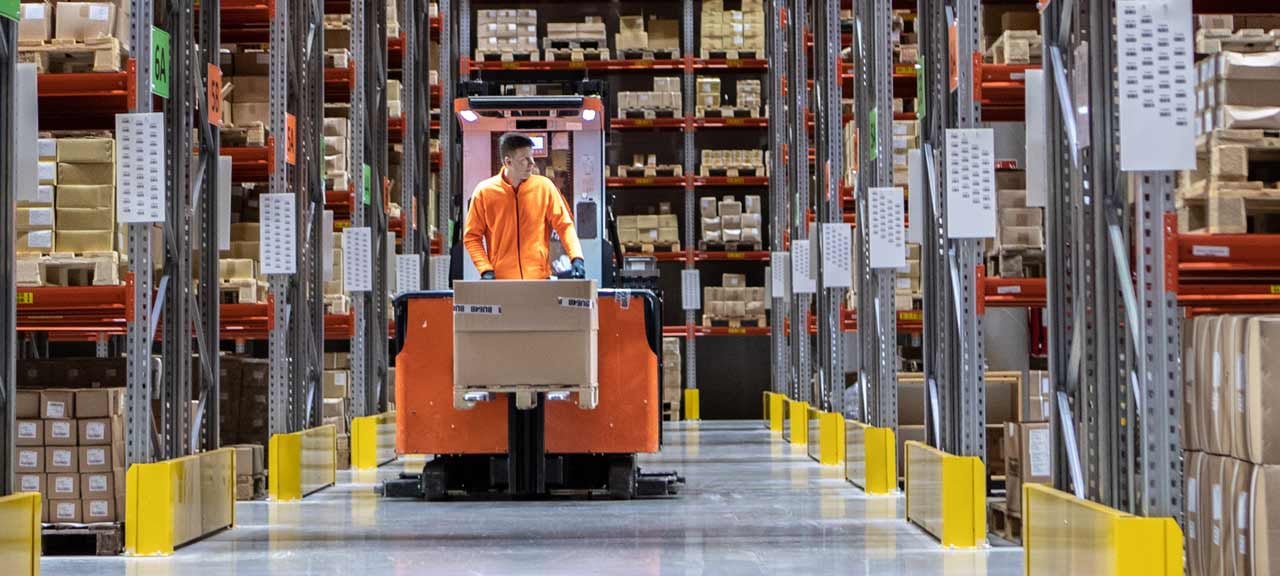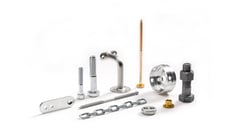- Insights
- The Solutionists Hub
- What is inventory optimization?
What is inventory optimization?

Me and my colleagues at Bufab work with manufacturers of all kinds and sizes in our daily work. Some of them are relatively small companies, which only use a limited range of fasteners in fairly low quantities. Others are major enterprises with thousands of employees across multiple countries, with a high rate of parts consumption and extensive inventories.
For both of these types of businesses to flourish, they need an optimized C-parts inventory. Even though they seem very different, the inventory challenges and solutions they experience are often quite similar.
What is the definition of inventory optimization?
Wherever your company falls on this spectrum, I believe the definition of an optimized C-parts inventory is the same:
An optimized C-parts inventory gives you trouble-free access to the right C-parts at the right time, in the required quantity, quality and with an optimized total cost. It provides flexibility when your requirements change, uses the available space efficiently, and gives peace of mind by allowing you to take C-parts availability for granted."
With this in mind, inventory optimization is the process of rationalizing your inventory to maximize efficiency, both on the production line and in other parts of the business, such as purchasing. It also aims to ensure high availability, by keeping stock levels consistent, and not too high or low. Additionally, it gives you space to prepare for future changes in requirements – for example, adding a new product to your range.
How to optimize your C-parts inventory
Defining inventory optimization is easy, but achieving an optimized C-parts inventory is often more difficult. Based on the optimization projects that I’ve been involved in, the following are the core elements that must be in place for optimization to be achieved:
- Digital replenishment solutions
- Control over parts usage
- Demand analysis and planning
- Consolidation – of parts and suppliers
Invest in digital C-parts replenishment solutions
Unoptimized inventories often cause companies to develop bad habits and make mistakes in their inventory management. If you rely too much on manual processes, it’s easy to forget to place an order or miss stock levels becoming dangerously low. This issue is best solved through digital replenishment solutions – for example, by scanning a bar code on a box when a part is removed from it. This creates real-time data on the number of available parts in stock which can be used to trigger an automatic order when a new shipment of parts is needed.
In some solutions, the bar code can be replaced with a scale or an RFID chip to cut the risk of human error even further – simply removing a part from the box is enough to update the system.
Making an inventory truly optimized requires more elements than just systems like these. But in my experience, they’re a prerequisite for creating an inventory you can rely on.
Get control over your C-parts usage
The digital replenishment solutions I mentioned above are one aspect of gaining control over your C-parts and optimizing your inventory. But there’s also a need among operations managers and production managers to get more control on the factory floor. In my experience, a lot of inventory issues are simply caused by parts going missing. Many companies go through parts much quicker than they should, and it’s often hard to find the reason. It could be components getting misplaced or sorted into the wrong box. Often, it’s a result of unoptimized working practices – for example, when an employee takes multiple parts to their station instead of taking multiple trips.
Work on your demand analysis and planning
One key characteristic of an optimized C-parts inventory is flexibility and adaptability to change. You might be happy with how your current inventory meets your needs today, but if your plans change tomorrow and the inventory can’t adapt, it can’t be considered truly optimized. This flexibility is achieved through demand analysis, allowing for more accurate planning. By looking into the data that is recorded by a digital inventory management system, you can identify historical usage patterns from previous periods of higher or lower demand. By analyzing the timings of these periods and looking at how you performed, you can accurately predict future levels of demand, and get prepared in good time. If you don’t have any digital solutions in place – for example, if you simply make a new order when you notice stock levels running low – you won’t see this data, increasing the risk of being unprepared during times of higher demand.
Start consolidating your C-parts and supplier
The manufacturers who have the best approach to their C-parts inventories prioritize consolidation. By keeping the number of suppliers as low as possible, they reduce costs, reduce the risk of errors and miscommunication, and keep track of lead times. Shopping around for the cheapest supplier may save some upfront costs, but in the end, it often leads to a disjointed approach that produces far too much administrative work. They also take the same attitude towards the parts themselves. Because of a lack of internal communication, many C-parts inventories are filled with more part types than are needed to manufacture the products. Even if this isn’t the case, they are sometimes kept in the wrong quantities – for example, excessive levels of a particular component that isn’t used that much.
Learn more with our inventory optimization guides
Hopefully, this article has given you some insights into what inventory optimization is and some basic approaches for achieving it in your operation. To keep learning more, take a look at our inventory optimization guide to find out when it's time to start optimizing your inventory and discover some of the challenges you're likely to face — and make sure to download The Manufacturer's Guide to Logistics Solutions below to get a overview of the digital alternatives that can put you on the road towards an optimized inventory.










